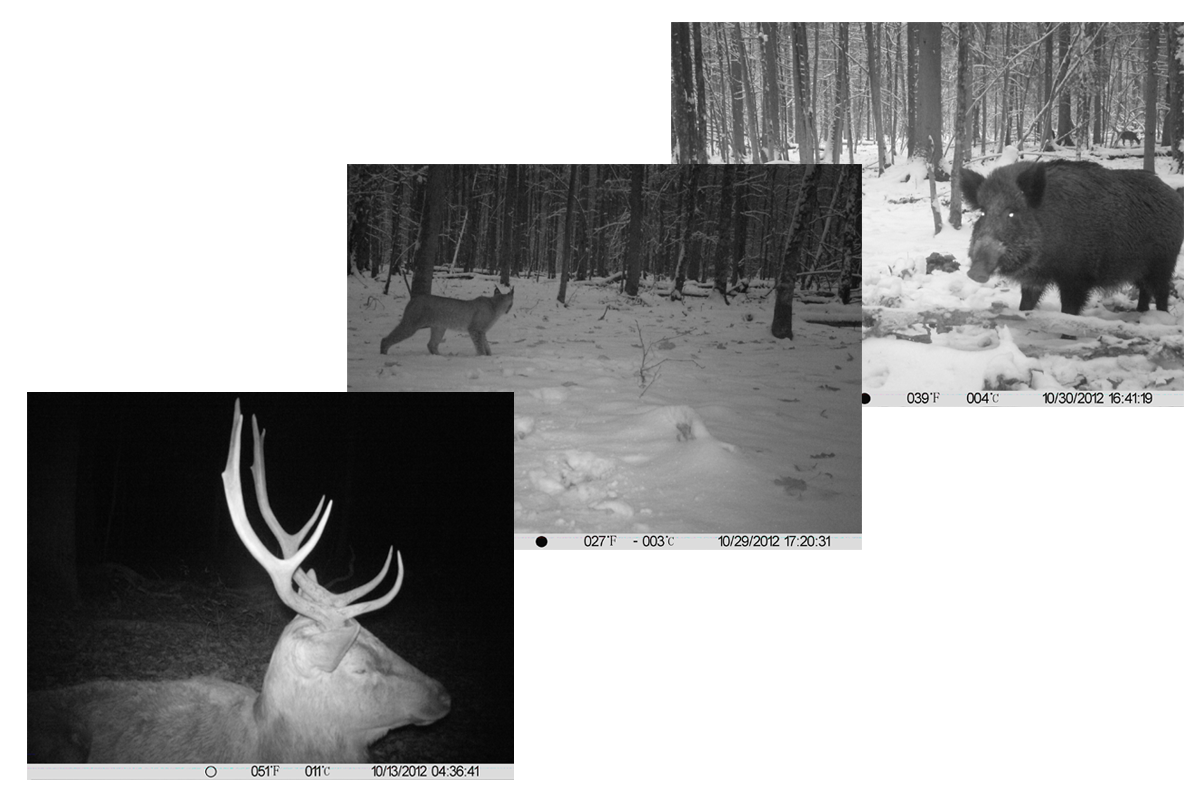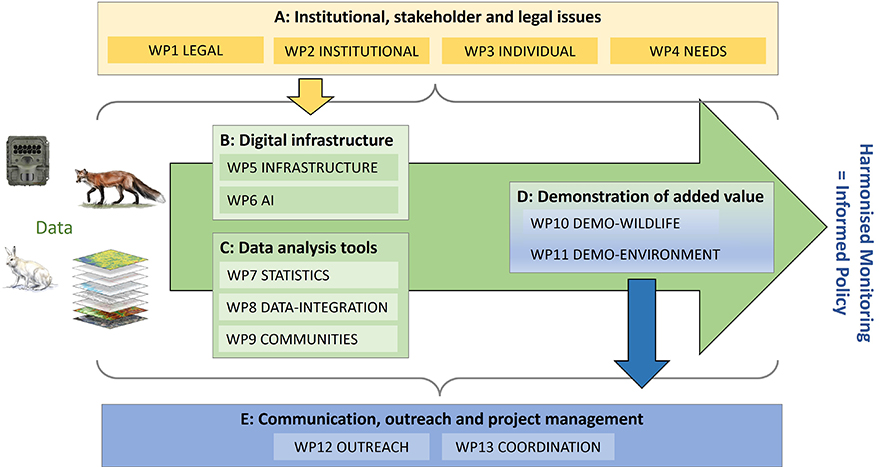About
What are the challenges?
Professional researchers use camera traps within the frames of a diversity of carefully designed field protocols often within spatially limited study sites. In addition, there are a massive number of camera traps in the hands of citizen scientists, including naturalists, hunters, foresters and landowners. They are used in an unstructured manner, but cover a far larger proportion of the landscape.
Legal & trust issues
Legal & trust issues, concerning both intellectual property rights and privacy regulations (where humans may be photographed), as well as social and institutional issues currently limit the possibility and willingness to share data.
Large volume of images
The large volume of images represents a challenge for data processing (looking through images, extracting information) because it is very time-consuming. Relatively few professional projects process all data, and instead only focus on the target species. Automatic AI based technology is not yet very user friendly nor adequately trained for all European species. Citizen-science data is mostly manually scanned for species of interest and is rarely fully classified or entered into databases. This limits the possibility to make data available.
Different databases
Different databases are used by both professional and non-professional users, which limits the possibility to share available data.
Lack of analytical tools
The lack of analytical tools for exploring data, especially when it concerns integrating data across species, or across study sites that use different field designs and data collection protocols. This limits interpretation of data from different data sources.
Need for tailored analysis frameworks
There is a need for tailored analysis frameworks as we currently lack a formal understanding of which data can robustly be used to address which questions, or how best to integrate different data types. This limits the robustness of the results beyond specific study areas.
 Images by the Mammal Research Institute, Polish Academy of Sciences.
Images by the Mammal Research Institute, Polish Academy of Sciences.
Project activities
- Examine the legal and institutional issues that enable or constrain data sharing.
- Build procedures to connect different databases and develop robust AI-enabled image processing tools.
- Develop best practice procedures for different statistical analysis tools that can be best applied to different types of data.
- Conduct analyses using the results from 1-3 to show the added value of data sharing.
- Disseminate the project’s tools to end users, including wildlife/nature managers, hunters, foresters, naturalists, scientists, and the general public at regional, national, and European levels.
 Flowchart of how work packages are gathered into clusters. Social science research (cluster A) provides the societal and policy
framings for the technical scientific activities (cluster B, C and D) which focus on improving data accessibility to
support more informed policy development and implementation, ensuring the practical coordination and outreach activities
for the project (cluster E).
Flowchart of how work packages are gathered into clusters. Social science research (cluster A) provides the societal and policy
framings for the technical scientific activities (cluster B, C and D) which focus on improving data accessibility to
support more informed policy development and implementation, ensuring the practical coordination and outreach activities
for the project (cluster E).